8. Thirst Street (2017)
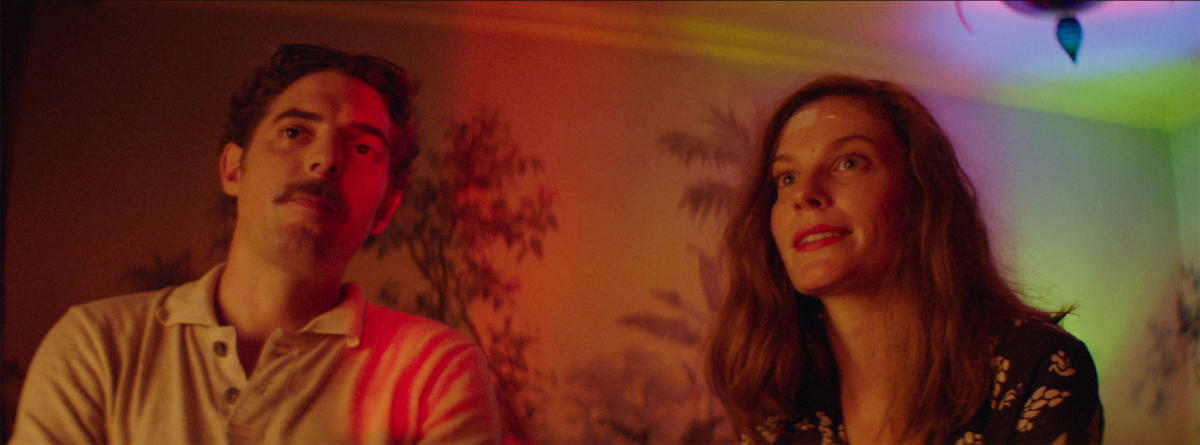
During the film’s pre-title preface the viewer is deftly launched into what feels like a keyed up Sirkian melodrama –– imagine, if you will, that Douglas Sirk did some hardcore street drugs –– before nervously relaxing into an increasingly engaging, unhinging, multicolored psychodrama.
Lindsay Burdge is brilliant as Gina, an ill-fated American flight attendant in the throes of grief after having lost her love to suicide. Unable to cope and on the brink of emotional collapse, Gina finds herself with a night off in Paris where she meets the charming yet cheap gadfly, Jerome (Damien Bonnard). With a little booze and the bolstered confidence from a bribed fortune teller, Gina commits to an eager one-night stand, and here a new set of troubles are born.
Director Nathan Silver and his sterling cinematographer Sean Price Williams like to linger on Burdge, making much of Thirst Street unravel like a master class in cinematic portraiture, but that’s not all the maneuvers they’re interested in. Their visual roster details Burdge’s lopsided amour fou with a wealth of split-diopters, tiffany zooms, and surreal splashes of color.
As the imagery washes over the viewer they will find stirring moments of Jesús Franco-like softcore, Old Hollywood schmaltz in a William Seiter vein (“…like something out of an old musical,” the narrator suggests), and the go for baroque kaleidoscopic overkill of Dario Argento and Mario Bava. Is it too much? Maybe, but aren’t the throes of wildest passion too much? Is it wonderfully explicit and overly expressive? Yes, absolutely.
7. In the Realm of the Senses (1976)
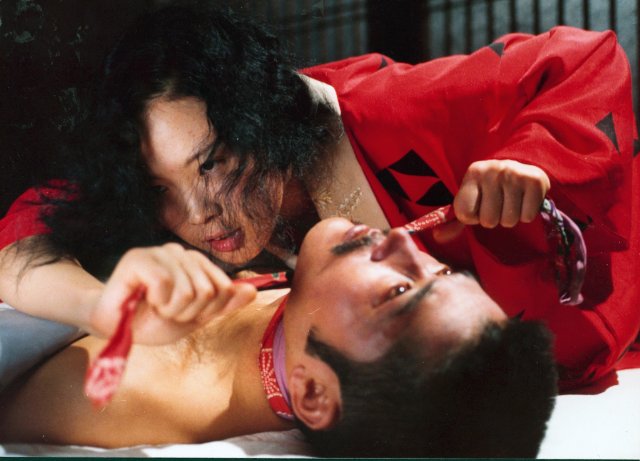
Japanese director Nagisa Oshima became synonymous with notoriety with this incredibly controversial erotic thriller which features unsimulated sex between many cast members, pushing the boundaries of arthouse acceptability and prying at social mores in Japan, specifically at how eroticism was viewed in that country at that time.
Set in Tokyo in 1936, Sada Abe (Eiko Matsuda) is a former prostitute now working as a menial servant and about to begin a torrid affair with her employer Kichizō Ishida (Tatsuya Fuji), who’s married.
Sada and Ishida become particularly infatuated with erotic asphyxiation, the results of which are disastrous for them. Their unhealthy obsession culminates in an ending so upsetting and unforgettable that I won’t go into it here but I will say, for those who’ve never seen the film, that it’s quite shocking and once you’ve witnessed it, well, you can’t unsee it.
6. True Romance (1993)
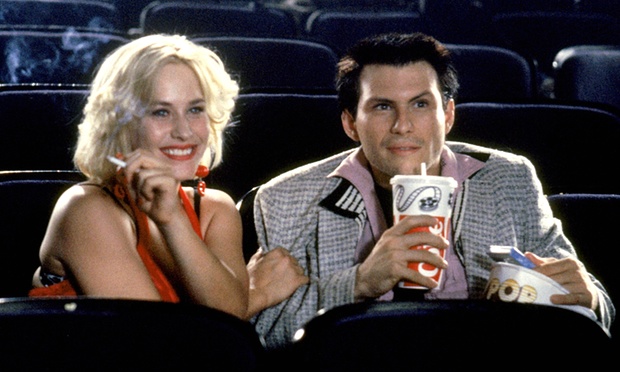
In the early 90s American cinema was seemingly owned by Quentin Tarantino, and his darkly hilarious, savvy and sarcastic screenplay for Tony Scott is no exception.
Excessively violent and dreamily romantic, True Romance features a huge cast of players (including Patricia Arquette, James Gandolfini, Dennis Hopper, Val Kilmer, Gary Oldman, Brad Pitt, Christian Slater, and Christopher Walken), an endless stream of expletives, bullets, double crosses, pot smoke, comic books, kung fu, cocaine, and a kooky love story.
An Elvis-obsessed comic book collector named Clarence Worley (Slater) falls for callgirl Alabama Whitman (Arquette) and, intending to reason with her takes-no-shit pimp Drexl Spivey (Oldman), ends up killing the guy and taking a suitcase full of cocaine from him while he’s at it.
Soon Clarence is confiding in Elvis Presley (Kilmer) himself while on the run with Alabama –– whom he marries cuz, well, insta-love –– and hatches a sloppy plan to sell the cocaine. Too bad the mob, Hollywood sleaze merchants, and Federal Agents are all getting caught up in this mess, too.
Alternately gleeful and grisly, a tad convoluted, but nonetheless a lot of mischievous fun, True Romance is a fever dream of lovers, villains, heroes, harlots, jerks, ghosts, bad boys, and stoners is pretty hard to resist. Part of the joy of True Romance is the bumpy ride that culminates into an intense third act showdown. “Okey dokey doggie daddy.”
5. The Duke of Burgundy (2014)
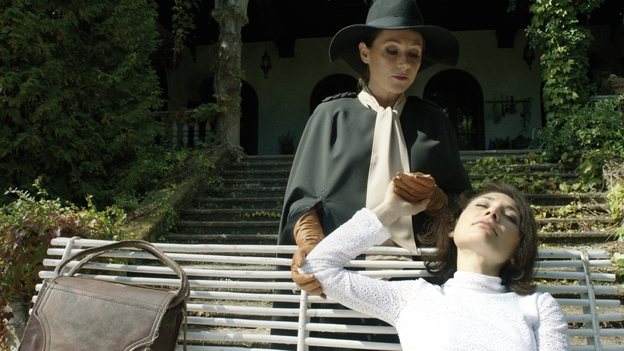
The third film from writer-director Peter Strickland (In Fabric [2018]) is a pastiche of erotic exploitation cinema from the 70s –– Jesús Franco and Jean Rollin float to mind with soap bubble inertia –– with no deficit of idiosyncrasy, imagination, or veiled decorum, either. Existing in a pocket universe inhabited wholly by women, The Duke of Burgundy offers tactile pleasures at every turn, Euro-smut has never looked so lovely, salacious, or finely detailed.
For better or worse, and it’s often difficult to tell which, Evelyn (Chiara D’Anna) is romantically involved with older Cynthia (Sidse Babett Knudsen) as cinematographer Nic Knowland’s outrageously overripe lensing mingles with Pater Sparrow’s effete yet plush production design, and Mátyás Fekete nostalgic and almost gimmicky editing –– featuring, for instance, freeze-frames that relax into fleshy pink ambiguity –– making for an artificial world that moans with titillation and mystery at every inviting wheeze. This is a film of mystery, lucid dreaming, closed door transgressions, and artful fetish from an exciting cinematic pariah.
4. Breathless (1959)
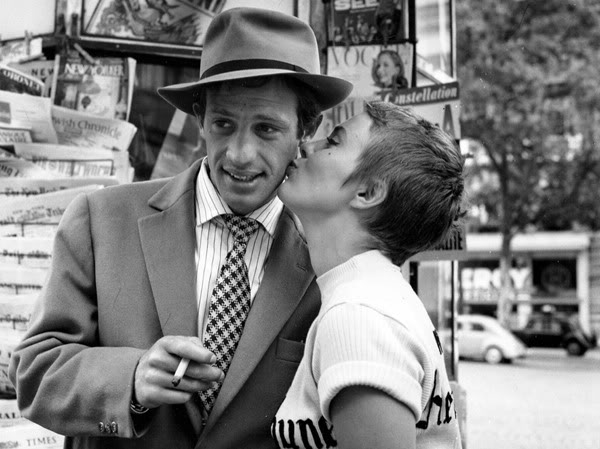
“Modern movies begin here, with Jean-Luc Godard’s Breathless in 1960,” raved an enraptured Roger Ebert, adding in his proximation that “no debut film since Citizen Kane in 1942 has been as influential.”
One of cinema’s watershed works, Godard, who is easily one of the most influential filmmakers of all time, gave the world Breathless, and in so doing simultaneously gave the French New Wave its most influential, imitated and well-valued movie of the 1960s.
At once a playful parody of and loving homage to the American gangster film, Breathless stars Jean-Paul Belmondo (in his breakout role) as Michel, a lovable small-time crook on the lam from the fuzz in Paris, and Jean Seberg as Patricia, his ambivalent American girlfriend in a role that would make Seberg a fashion icon.
Breathless’s slick use of handheld 35mm cameras, and location shooting would soon define New Wave aesthetics, as did much of its most radical technical innovation, the attention-snaring use of elliptical editing and the startlingly effective jump cut.
Overflowing with pop culture references, in-jokes aplenty, nods to other films both past and present, abrupt tonal shifts, and Brechtian asides (later to be known as Godardian asides, let’s face it), the tangible chemistry between Michel and Patricia would also be the snake bite that does one of them in for good as their love crashes against the rocks.
Breathless is one of those films that makes it impossible to imagine the history of cinema without it, and perhaps love, too, for that matter.
3. Wild at Heart (1990)
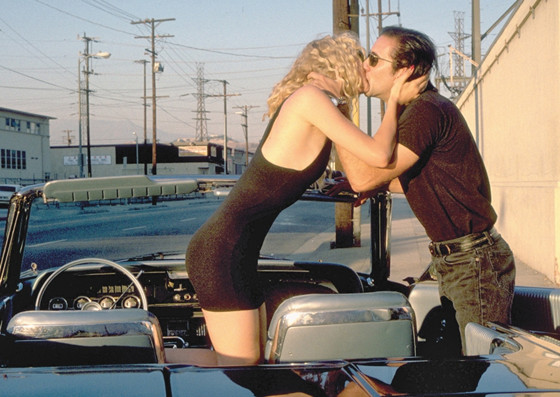
“Baby, you better get me back to the hotel, you got me hotter than Georgia asphalt.”
Winner of the Golden Palm at the 1990 Cannes Film Festival, David Lynch’s Wild at Heart also represents the surreal director’s first collaboration with writer Barry Gifford. Lynch’s devilish, delirious, and wholly hilarious screenplay adapts Gifford’s 1989 novel of the same name, and the two would collaborate later in the decade on Lost Highway (1997).
Starring a never better Nicolas Cage as the outspoken and dancing impaired tough guy Sailor Ripley, he’s just gotten out of a lengthy prison sentence for the self-defense but brutal killing of Bobby Ray Lemon (Gregg Dandridge).
Reunited with his girlfriend Lula (Laura Dern), the pair are soon on the run as Lula’s mean-spirited mama Marietta (Diane Ladd, in an Oscar nominated performance), who was responsible for sicking Lemon on Sailor in the first place, is desperate to keep the lovers apart, and at a high cost.
Wild at Heart features a wonderfully deranged cast that includes Willem Dafoe, Crispin Glover, John Lurie, Isabella Rossellini, Harry Dean Stanton, and more, and riffs on the old story amour fou/lovers on the run tale with a combination of fresh ideas, surreal side steps, steamy sex, explosive violence, strange pastiches (both Elvis and the Wizard of Oz get a lot of loving lip service), musical numbers, genre mashups, and more. Wild at Heart is a wild, and unpredictable ride with the breakline cut and the engine on fire.
2. Bonnie and Clyde (1967)
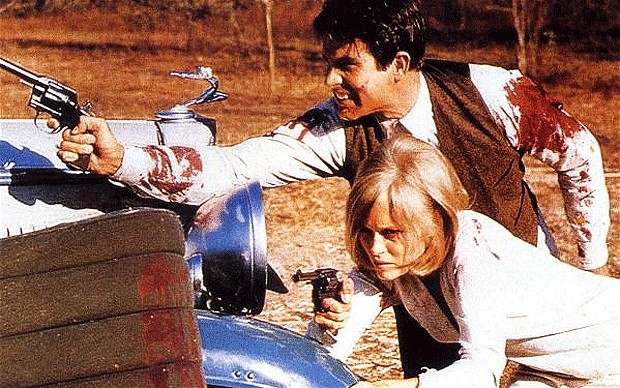
Dead end fatalism and doomed love lay at the crux of Arthur Penn’s impossibly influential road movie of ruined dreams, Bonnie and Clyde. How influential? Let’s just say that most of the films on this list would not exist without this amour fou on-the-run template.
Warren Beatty is the charismatic small-time crook Clyde Barrow who one day tries to steal a car and wouldn’t you know it, winds up with its owner’s daughter, the dangerously dissatisfied small-town girl Bonnie Parker (Faye Dunaway). Their love, like their crime spree, quickly spirals out of control, moving from petty theft to bank robbery. But tensions simmer between the passionate couple, and none of it is going to end well.
And speaking of endings, the famous one here is also infamous, often pinpointed as the precise place that burst open the floodgates for ultra-violence in mainstream motion pictures ever after.
1. Jules and Jim (1961)
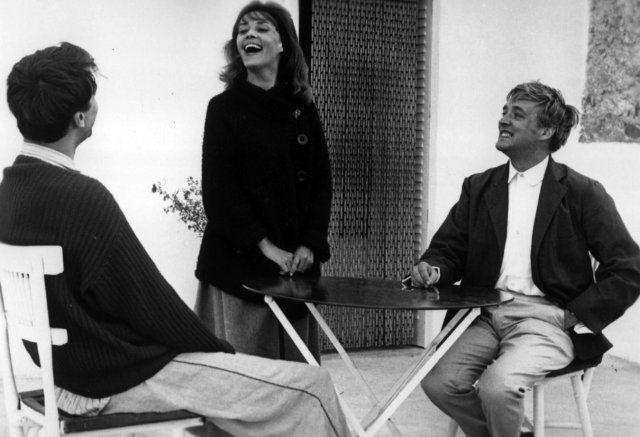
A bittersweet experience of lasting intensity, François Truffaut’s regret tinged showpiece, Jules et Jim, is anything but atypical in its telling of boy meets girl meets boy then all-get-chewed-up-and-spat-out by love.
A period romance rich in sweet, stinging sadness as Catherine (Jeanne Moreau) romances and ravages Jules (Oskar Werner) and Jim (Henri Serre), Jules et Jim was met with a 15-minute standing ovation at its premiere, this is Truffaut’s best-loved film for a reason, and perhaps no other film best captures the spirit of the French New Wave and most assuredly no film better details that mad passion and delirium of love.
Adapted from Henri-Pierre Roché beloved semi-autobiographical novel from 1953, Jules et Jim, this lightning-paced foray into doomed love and exquisite sadness is a charming and influential film of giddy romance run amok.
The spirited and extensive narration, which inspired Scorsese’s Goodfellas, amongst other modern works, was light years ahead of its time, as were the stylish freeze frames, jump cuts, and taboo-smashing ménage à trois/love triangle scenario.
Sure, certain aspects of the film may not have aged perfectly well, some of what made Jules et Jim such a groundbreaking pièce de résistance may not be readily apparent to modern audiences, but the film still carries a fresh and sunny élan, a buoyancy and fire as infectious today as it ever was. And the performances hold strong in this delicious and gratifying tour de force.
Author Bio: Shane Scott-Travis is a film critic, screenwriter, comic book author/illustrator and cineaste. Currently residing in Vancouver, Canada, Shane can often be found at the cinema, the dog park, or off in a corner someplace, paraphrasing Groucho Marx. Follow Shane on Twitter @ShaneScottravis.